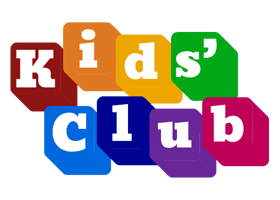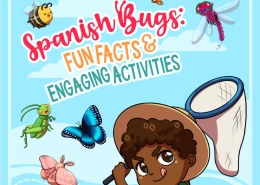 Kids' Club Spanish School, LLC
https://kidsclubspanishschool.com/wp-content/uploads/2024/07/blog_summer-spanish-activities-for-kids-3.png
807
800
Alexis Fishbaugh
https://cdnwp.kidsclubspanishschool.com/wp-content/uploads/2025/05/kids-club-spanish-school-header-logo.webp
Alexis Fishbaugh2024-07-28 22:48:532024-07-28 22:48:53Summer Spanish Activities for Kids
Kids' Club Spanish School, LLC
https://kidsclubspanishschool.com/wp-content/uploads/2024/07/blog_summer-spanish-activities-for-kids-3.png
807
800
Alexis Fishbaugh
https://cdnwp.kidsclubspanishschool.com/wp-content/uploads/2025/05/kids-club-spanish-school-header-logo.webp
Alexis Fishbaugh2024-07-28 22:48:532024-07-28 22:48:53Summer Spanish Activities for KidsLearning a foreign language is hard and Spanish is no exception.
Depending on your native language, you might find yourself making mistakes that someone whose native language is different from yours might not make. This article is specific to native English speakers learning Spanish as a foreign language. We will discuss some common mistakes native English speakers make when learning Spanish.
When trying to speak a foreign language, translating from your native language to the new language, word for word, doesn’t tend to be a very successful method. While some words and phrases translate perfectly, word for word, many do not. One commonly used word in English, that seems quite similar in Spanish, might actually be two completely different words in Spanish. Other words might not even exist at all. Each language has their own unique structure to form and grammatical structure.
It’s quite common for people learning a new language to try to translate what they want to say directly from their native language, since that is how their brain is wired to think, after all we have been speaking and hearing our native language since birth. However, this will many times cause the speaker to not make any sense in the new language. It can be hard to rearrange the way we are used to speaking, but with lots of practice (and time), you’ll stop translating directly from English to Spanish in your head, and you’ll start to form the thoughts and ideas directly in Spanish.
1.- Using “To like” Incorrectly when Speaking Spanish as a Foreign Language
The first common native English speaking mistake, that we would like to discuss, is the verb “To like”. In Spanish, in order to communicate to someone else that we like someone, we would use the verb “Gustarse”, which translates “To please”. So instead of saying “I like you” in Spanish, you would literally need to say “You please me”. It’s quite common for native English speakers to want to say “Te gusto”, assuming that they are saying “I like you”, since this has a similar structure to the English phrase. However, in actuality, they are saying “I please you” or “You like me”.
The correct way to say this is “Me gustas” or, as stated before “You please me”. The subject, what is pleasing, appears after the verb rather than at the beginning of the sentence as in “I like you”. In the correct Spanish structure, “Me gustas”-“You please me”, the subject, or what is pleasing, comes at the end of the sentence. So instead of appearing at the beginning of the sentence, like in “I like you”, the subject comes after the verb and the form of gustar comes in front of that. The sentence starts with an object pronoun (which refers to the person being pleased). This all sounds quite confusing and should not be memorized. What should be remembered is that you cannot directly translate when learning a language, and that we say “I like you” as “Me gustas” in Spanish.
2.- False Cognates
Cognates are words that look and sound very similar in both languages. The English word “Creation” translates to “Creación” in Spanish. Additionally, “Family” and “Familia”. However, not all words that look and sound the same have the same meanings in both languages.
These words are referred to as “False cognates”. You might think that the Spanish word for “Embarrassed” translates to “Embarazada”. This is not accurate and if you use it incorrectly you might find yourself in yet another embarrassing moment, because English translation of “Embarazada” is actually “Pregnant”.
Not all false cognates are this extreme, but if you use them incorrectly you might not be understood.
Let’s say you are visiting the Museo Nacional del Prado in Madrid, Spain and you are trying to find the exit. If you ask someone for the “Éxito”, you are actually asking them for the “Success”, as the word for “Exit” in Spanish is actually “Salida”. These are just a few of the many examples of false cognates that exist. It’s not a small list that you can quickly memorize, but is something that most native English speakers learning Spanish learn from trial and error.
3.- Adjective Placement
When speaking in English, we place the adjective before the noun. However, in Spanish, the adjective is placed before the noun. When saying, in Spanish, “The happy child” would translate to “El niño feliz”, which literally means “The child happy”. Another example is the adjective “Dirty” which translates to “Sucio” in Spanish. In English we would say “Dirty clothes”, but in Spanish, they would say “Ropa sucia”, which translates back to “Clothes dirty” in English. However, there are some exceptions.
Some adjectives in Spanish can be used before or after the noun, but the placement of the adjective gives it a different meaning. Therefore, “Casa nueva” translates to “New house” as in a newly made house. “Nueva casa”, on the other hand, translates to “New house” as in a new house to someone, but not necessarily new in age. The word “Viejo” is also a good example of verb placement changing the meaning. And, “Amigo viejo” translates to “Old friend” as in an elderly friend. “Viejo amigo” translates to “Old friend” as in a long time friend.
These are just a few examples of how adjectives can and cannot be placed in Spanish. Just like the false cognates, they’re not something you can quickly memorize, but something that you will learn with time through practice, trial and error.
4.- Possessive Pronouns and Body Parts
When speaking about body parts in English we use possessive pronouns, like “my nose”, “your foot”.
For example, “My head hurts” or “His back hurts”. However, in Spanish the possessive pronoun is not used. Since “Your head hurts me” is a very rare possibility and the person’s whose body part is being discussed is almost always the subject using a possessive pronoun is not necessary. So instead of saying “My head hurts”, they would say “Me duele la cabeza”, which translates to “The head hurts me”. Since it is the head that is inflicting the pain to the person, the possessive pronoun is implied, and it is assumed it is one’s own. “His back hurts” would translate to “Le duele la espalda”, which translates back to “The back hurts him”.
A lot of native English speakers who learn Spanish will wrongly use the possessive pronoun of “mi”, “tu”, etc… and say “Me duele mi cabeza” which is the literal translation of the English sentence. Once again, we see that literally translating things from English to Spanish is not ideal. You will be understood in this case, but just sound more non-native. Which is ok too!
5.- “To be” or “To have”
In English we “are” our ages. I am 13 years old. When speaking Spanish we “have” years. The correct way to tell someone your age is to literally say “I have 13 years old” (Yo tengo 13 años). “To be” and “To have”, are used a bit differently in Spanish than in English in a few common expressions in Spanish. A native English speaker who says does not use “to have” correctly will sound… well like a non-native Spanish speaker. Another example is “I am cold / hot”, in Spanish it is “I have cold / hot” (Yo tengo frío / calor).
Next time you find yourself hiking the glaciers of Patagonia, be sure to remember to tell your Spanish speaking tour guide that you “have cold”, “Yo tengo frío”.
Native English speakers make some very specific and common mistakes when speaking Spanish as a foreign language. This is no coincidence but has to do with the common structure of English that we English speakers learn from birth. It is hard to re-wire our brain to use a different structure when speaking a foreign language. The common mistakes discussed here in this article are just a few examples of this interesting phenomenon.
We have learned that when speaking Spanish as a foreign language we cannot directly translate from our native English to Spanish, as this will carry over language structures from English that do not happen in the same way as they do in Spanish. Each language has their own unique structure in grammar and unique ways of using different words.
In summary, it can be a bit difficult to re-wire your brain to think using this new structure and to use vocabulary in a different way, but this is the beauty of learning another language. You get to, in a way, bend your brain and speak, and think, in a completely different way. But don’t worry, if it takes a while getting used to; although, at times you might not be understood, the majority of the time you will be made clear, just sounding like a native English speaker speaking Spanish, and that is ok. A language is a tool for communication, as long as the speaker communicates with it, it is a huge success!
Kids’ Club Spanish School is proud to be an important part of your childs’ language learning success. Sign them up for Spanish immersion classes at kidsclubspanishschool.com and get two free trial classes. Get them started on their bilingual journey and support them doing one of these things 10 minutes a day!






 Kids' Club Spanish School, LLC
Kids' Club Spanish School, LLC Kids' Club Spanish School, SL
Kids' Club Spanish School, SL Kids' Club Spanish School, LLC
Kids' Club Spanish School, LLC

